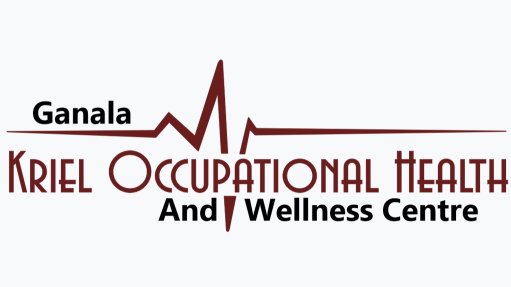Seifsa ‘cautiously optimistic’ following improved PMI
The Steel and Engineering Industries Federation of Southern Africa (Seifsa) is “cautiously optimistic” about the sector’s performance, in light of data released by the Absa Purchasing Managers' Index (PMI), which indicates an improvement in activity in the manufacturing sector.
This was the third consecutive increase and brought the index to its best level since the dip in June 2017.
“The PMI is the first data point for the preceding month and it is very important in setting the tone for how producers and relevant stakeholders in the manufacturing sector view the month. Although it has been trending below the neutral 50-point mark for the fifth consecutive month, the fact that it has been slowly improving for the better part of the period is encouraging,” said Seifsa chief economist Michael Ade.
He indicated that Seifsa was apprehensive about whether the trend would continue, owing to the prevailing political uncertainty. The overall year-to-date PMI data has had a volatile few months, mostly due to political turmoil. The volatility is expected to continue until the end of the year.
“The ambiguity in the Finance Minister’s Medium-Term Budget Policy Statement, and its lacklustre reception, coupled with the negative impact on the rand, further heighten the degree of uncertainty. The fluctuation in the index encapsulates the absence of normality and a ‘business-as-usual’ scenario in the metals and engineering (M&E) sector, making it even more difficult to plan in the short term,” observed Ade.
The latest composite seasonally adjusted headline PMI increased by 2.9 points to 47.8% in October 2017, with all five major seasonally adjusted subcomponents increasing in October when compared with the previous month. Of the five subcomponents, the new sales orders index increased the most, surging to 49.9 in October 2017 from 43.2 in September 2017. This was followed by an increase in the business activity index (45 index points), buoyed by an improvement in demand and output.
According to Ade, given that, to a large extent, the purpose of the PMI is to give an early reading on manufacturing production data, the expectation is for the continuous improvement in business activity to filter through to the upcoming manufacturing data for September 2017.
“The employment subindex improved to 44.3 index points, highlighting improvement in employment prospects in the manufacturing sector in general and the M&E sector in particular. The index – which has also been very volatile – is largely in line with the lagged employment figures released by Statistics SA’s Quarterly Labour Force Survey yesterday, confirming a net employment gain in the formal sector. The formal sector recorded an impressive employment gain of 187 000 and Seifsa is optimistic that the net increase in jobs will ultimately improve the official unemployment rate of 27.7% in Q3:2017 (when compared to Q3:2016),” said Ade.
He added that a series of temporary downward shocks in the M&E sector – such as commodity price shocks, merchandise trade shocks, demand shocks and selling price shocks – are now in the past, while concerns around generally low business confidence, increased instability and poor ease of doing business are still prevalent. While business confidence increased in the third quarter of 2017 to 35% (when compared with the 29% recorded in the second quarter of 2017), the confidence level is still well below the required 50%.
Ade said poor business confidence, increased uncertainty and volatility were not conducive for doing business. He said that it was important that everything possible be done to contain volatility in the exchange rate and other equally important input costs, especially since input costs in the M&E sector (as captured by Seifsa composite input cost index) are now trending slightly higher than recorded in the first two quarters of 2017.
He warned that rising input costs had the propensity to gradually erode margins in the sector, thereby rendering the sector more unattractive to potential investors.
Article Enquiry
Email Article
Save Article
Feedback
To advertise email advertising@creamermedia.co.za or click here
Comments
Announcements
What's On
Subscribe to improve your user experience...
Option 1 (equivalent of R125 a month):
Receive a weekly copy of Creamer Media's Engineering News & Mining Weekly magazine
(print copy for those in South Africa and e-magazine for those outside of South Africa)
Receive daily email newsletters
Access to full search results
Access archive of magazine back copies
Access to Projects in Progress
Access to ONE Research Report of your choice in PDF format
Option 2 (equivalent of R375 a month):
All benefits from Option 1
PLUS
Access to Creamer Media's Research Channel Africa for ALL Research Reports, in PDF format, on various industrial and mining sectors
including Electricity; Water; Energy Transition; Hydrogen; Roads, Rail and Ports; Coal; Gold; Platinum; Battery Metals; etc.
Already a subscriber?
Forgotten your password?
Receive weekly copy of Creamer Media's Engineering News & Mining Weekly magazine (print copy for those in South Africa and e-magazine for those outside of South Africa)
➕
Recieve daily email newsletters
➕
Access to full search results
➕
Access archive of magazine back copies
➕
Access to Projects in Progress
➕
Access to ONE Research Report of your choice in PDF format
RESEARCH CHANNEL AFRICA
R4500 (equivalent of R375 a month)
SUBSCRIBEAll benefits from Option 1
➕
Access to Creamer Media's Research Channel Africa for ALL Research Reports on various industrial and mining sectors, in PDF format, including on:
Electricity
➕
Water
➕
Energy Transition
➕
Hydrogen
➕
Roads, Rail and Ports
➕
Coal
➕
Gold
➕
Platinum
➕
Battery Metals
➕
etc.
Receive all benefits from Option 1 or Option 2 delivered to numerous people at your company
➕
Multiple User names and Passwords for simultaneous log-ins
➕
Intranet integration access to all in your organisation














